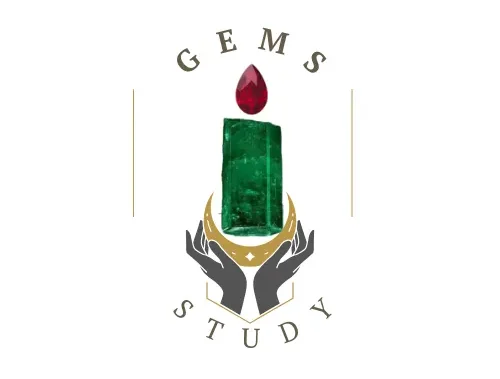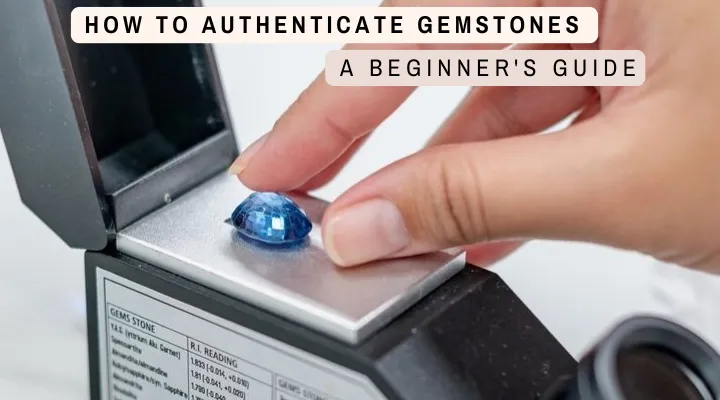Gemstones have fascinated humanity for centuries, prized not only for their beauty but also for their rarity and perceived mystical properties. As the popularity of gemstone jewelry continues to rise, so does the need to distinguish between genuine gemstones and their synthetic or counterfeit counterparts. Whether you’re a beginner gemstone collector, a jewelry enthusiast, or simply someone interested in learning more, this guide will help you understand how to authenticate gemstones effectively.
Why Authenticating Gemstones Matters
With the gemstone market flooded with synthetics, simulants, and imitations, knowing how to authenticate gemstones is essential. Genuine gemstones can have significant value, while fake ones may be worth only a fraction of the price. Additionally, ethical considerations are at stake, as conflict-free and ethically sourced stones are increasingly in demand.
Common Reasons to Authenticate Gemstones:
- Protect your investment.
- Ensure authenticity before purchase.
- Support ethical and sustainable sourcing.
- Verify certificates and grading reports.

Understanding the Different Types of Gemstones
Before learning authentication techniques, it’s important to distinguish between three categories:
1. Natural Gemstones
Formed through natural geological processes without human intervention. They typically include inclusions and other internal characteristics.
2. Synthetic Gemstones
Man-made stones that share the same chemical and physical properties as natural ones but are grown in labs.
3. Imitation or Simulant Gemstones
Stones that look like genuine gems but are made from different materials. These include glass, plastic, or lesser-value stones treated to appear more valuable.
Step-By-Step Guide to Authenticate Gemstones
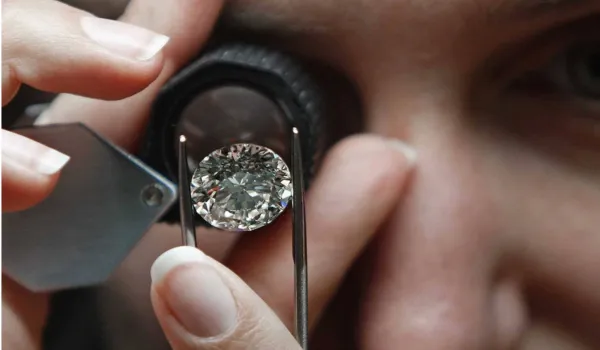
1. Visual Inspection: First Impressions Matter
Start by looking at the gemstone with the naked eye or a magnifying glass (loupe).
What to Look For:
- Inclusions: Natural gemstones typically have small imperfections.
- Color Uniformity: Natural stones often show color zoning or uneven color distribution.
- Surface Quality: Synthetic stones tend to be flawless; too-perfect stones might be lab-created.
2. Use a Jeweler’s Loupe or Microscope
A 10x magnification loupe is standard in gemstone inspection.
What You’ll Find:
- Natural inclusions: Feathers, needles, crystals.
- Synthetic inclusions: Gas bubbles or curved striae (indicative of flame fusion process).
- Drill marks or fillings: Evidence of treatments.
3. Check the Refractive Index (RI)
Refractive Index is a critical gem identification tool that measures how light bends through a gemstone.
- Use a refractometer.
- RI values are specific to each gemstone (e.g., diamond RI: 2.42, quartz RI: 1.54-1.55).
- Compare your reading with standardized charts.
4. Examine Gemstone Hardness
Different gemstones have different hardness levels, usually measured on the Mohs Hardness Scale.
Examples:
- Diamond: 10
- Ruby and Sapphire: 9
- Quartz: 7
Use hardness tests cautiously to avoid damaging the stone.
5. Conduct a Specific Gravity Test
Specific Gravity (SG) measures the density of a gemstone.
- Use a hydrostatic balance or heavy liquids.
- Natural and synthetic stones of the same material have similar SG, but simulants can vary significantly.
6. Observe Under UV Light (Fluorescence Test)
Some gemstones fluoresce under ultraviolet (UV) light.
Fluorescence Examples:
- Diamonds often fluoresce blue.
- Rubies may fluoresce red.
- Synthetic stones usually fluoresce differently or not at all.
7. Check for Treatments and Enhancements
Many gemstones undergo treatments to enhance their appearance, including heat treatment, dyeing, and fracture filling.
- Heat treatment: Common for sapphires and rubies.
- Fracture filling: May appear as flashes or bubbles under magnification.
- Dyeing: Observe unnatural color concentrations, especially near cracks.
8. Gemstone Certification and Grading Reports
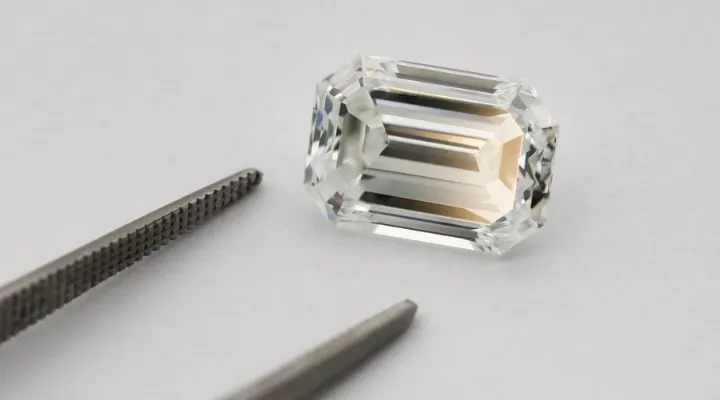
When buying gemstones, always ask for certification from reputable gemological laboratories.
Trusted Labs Include:


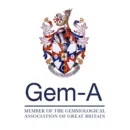
- GIA (Gemological Institute of America)
- AGS (American Gem Society)
- IGI (International Gemological Institute)
- EGL (European Gemological Laboratory)
Certificates confirm:
- Authenticity
- Treatments or enhancements
- Quality grades (color, clarity, cut, carat weight)
Common Gemstone Fakes and How to Spot Them
| Gemstone | Common Imitation | How to Spot It |
|---|---|---|
| Diamond | Cubic Zirconia, Moissanite | RI and hardness tests; CZ has lower brilliance. |
| Sapphire | Blue Spinel, Glass | Look for curved striae or bubbles under magnification. |
| Emerald | Green Glass, Synthetic Emerald | Natural inclusions (jardin) are irregular; glass is bubble-filled. |
| Ruby | Red Glass, Garnet | Synthetic rubies have curved lines; garnet has different RI. |
| Amethyst | Dyed Quartz, Glass | Color zoning and RI tests differentiate them. |
| Aquamarine | Blue Topaz, Glass | Blue topaz has a higher RI and may show different pleochroism. |
Tools Every Beginner Should Have
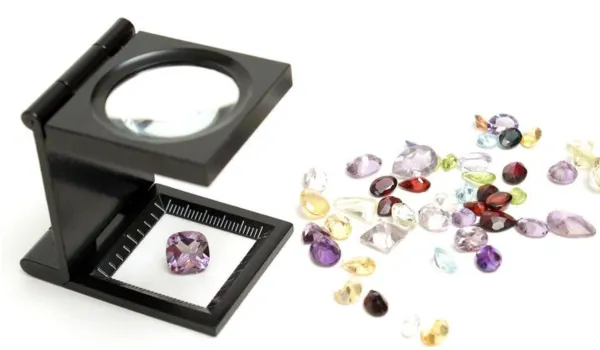
- Jeweler’s loupe (10x magnification)
- Refractometer (for RI measurement)
- Polariscope (to test optical properties)
- Dichroscope (to see pleochroism)
- UV light source
- Mohs hardness picks
- Hydrostatic balance (for SG measurement)
Ethical Considerations in Gemstone Buying
- Choose sellers that provide clear provenance and ethical sourcing.
- Look for conflict-free certification, particularly for diamonds.
- Prefer recycled or lab-created stones if ethical sourcing is a concern.
Red Flags When Buying Gemstones
- Prices too good to be true.
- No certification or documentation.
- Sellers refusing third-party verification.
- Claims that a stone is “natural” but flawless.
Tips for Buying Authentic Gemstones
- Buy from reputable dealers: Jewelers with certifications and memberships in professional organizations.
- Request documentation: Certificates and grading reports.
- Seek expert opinion: If unsure, consult a certified gemologist.
- Understand pricing: Know the average market value to spot overpriced or underpriced stones.
- Study the 4Cs (Color, Clarity, Cut, Carat weight): Particularly important for diamonds and precious gems.
The Role of Technology in Modern Gemstone Authentication
Advancements in gemological tools make it easier than ever to authenticate gemstones. Some emerging technologies include:
- Spectroscopy: To analyze the stone’s chemical composition.
- X-Ray Diffraction (XRD): For detailed crystal structure analysis.
- Advanced Microscopy: For studying inclusions and internal growth structures.
Conclusion
Authenticating gemstones may seem daunting for beginners, but understanding the basics and using the right tools can make the process accessible and enjoyable. As you build your knowledge, you’ll become better at recognizing the unique characteristics of each gem.
For significant purchases, always seek professional guidance and certification. Ethical sourcing and authentication help protect the environment, ensure fair trade, and guarantee the true value of your gemstone investments.
